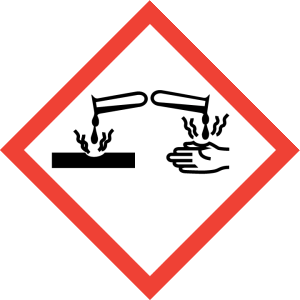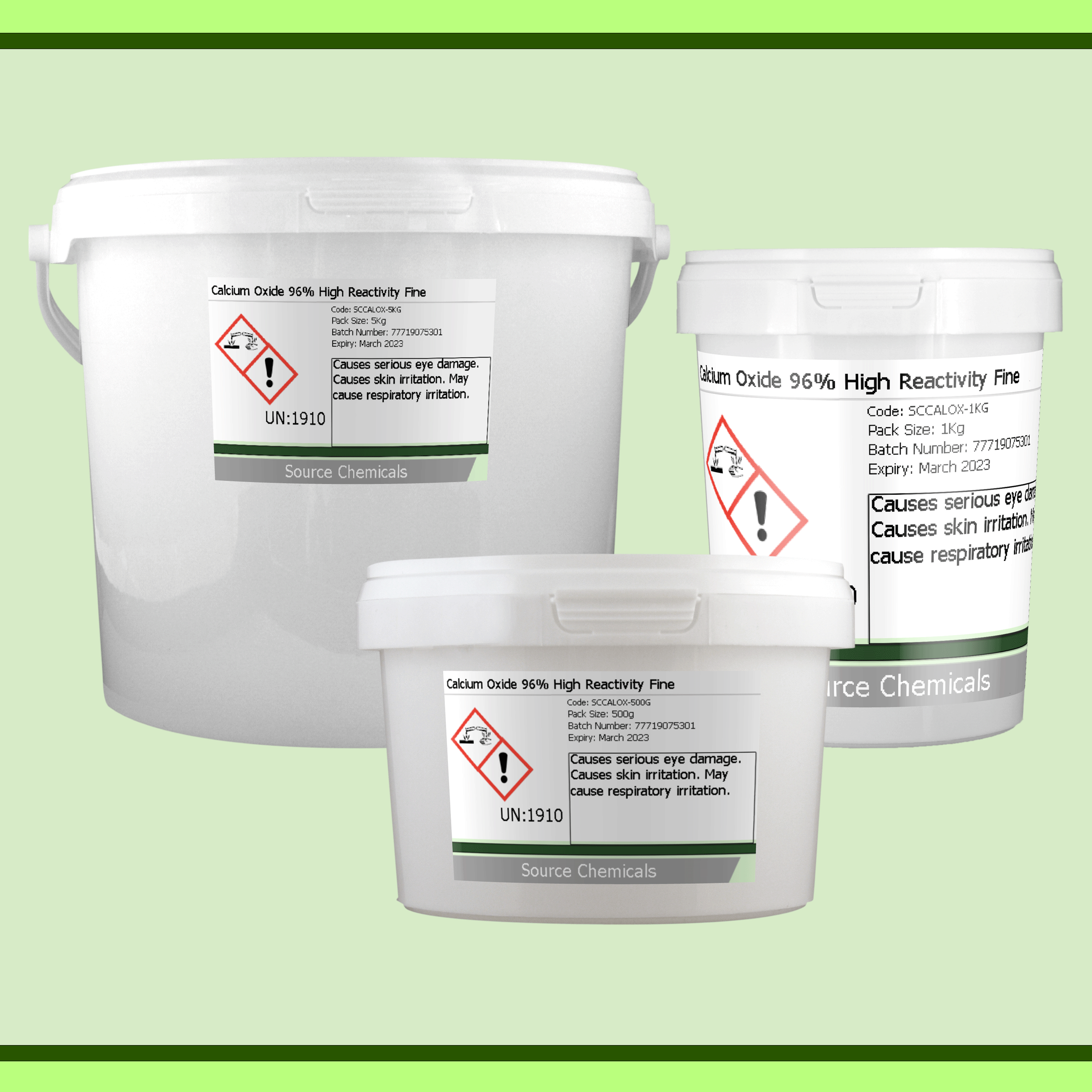Applications
- The major use of quicklime is in the basic oxygen steelmaking (BOS) process. Its usage varies from about 30–50 kg/t of steel. The quicklime neutralizes the acidic oxides, SiO2, Al2O3, and Fe2O3, to produce a basic molten slag.
- Ground quicklime is used in the production of aerated concrete blocks, with densities of ca. 0.6–1.0 g/cm³.
- Quicklime and hydrated lime can considerably increase the load carrying capacity of clay-containing soils. They do this by reacting with finely divided silica and alumina to produce calcium silicates and aluminates, which possess cementing properties.
- Small quantities of quicklime are used in other processes; e.g., the production of glass, calcium aluminate cement, and organic chemicals.
- Heat: Quicklime releases Thermal energy by the formation of the hydrate, calcium hydroxide, by the following equation:
- CaO (s) + H2O (l) ? Ca(OH)2 (aq) (ΔHr = −63.7 kJ/mol of CaO)
- As it hydrates, an exothermic reaction results and the solid puffs up. The hydrate can be reconverted to quicklime by removing the water by heating it to redness to reverse the hydration reaction. One litre of water combines with approximately 3.1 kilograms (6.8 lb) of quicklime to give calcium hydroxide plus 3.54 MJ of energy. This process can be used to provide a convenient portable source of heat, as for on-the-spot food warming in a self-heating can, cooking, and heating water without open flames. Several companies sell cooking kits using this heating method.
- Light: When quicklime is heated to 2,400 °C (4,350 °F), it emits an intense glow. This form of illumination is known as a limelight, and was used broadly in theatrical productions prior to the invention of electric lighting.
- Cement: Calcium oxide is a key ingredient for the process of making cement.
- As a cheap and widely available alkali. About 50% of the total quicklime production is converted to calcium hydroxide before use. Both quick- and hydrated lime are used in the treatment of drinking water.
- Petroleum industry: Water detection pastes contain a mix of calcium oxide and phenolphthalein. Should this paste come into contact with water in a fuel storage tank, the CaO reacts with the water to form calcium hydroxide. Calcium hydroxide has a high enough pH to turn the phenolphthalein a vivid purplish-pink color, thus indicating the presence of water.
- Paper: Calcium oxide is used to regenerate sodium hydroxide from sodium carbonate in the chemical recovery at Kraft pulp mills.
- Plaster: There is archeological evidence that Pre-Pottery Neolithic B humans used limestone-based plaster for flooring and other uses. Such Lime-ash floor remained in use until the late nineteenth century.
- Chemical or power production: Solid sprays or slurries of calcium oxide can be used to remove sulfur dioxide from exhaust streams in a process called flue-gas desulfurization.
- Mining: Compressed lime cartridges exploit the exothermic properties of quicklime to break rock. A shot hole is drilled into the rock in the usual way and a sealed cartridge of quicklime is placed within and tamped. A quantity of water is then injected into the cartridge and the resulting release of steam, together with the greater volume of the residual hydrated solid, breaks the rock apart. The method does not work if the rock is particularly hard.
General
Calcium oxide (CaO), commonly known as quicklime or burnt lime, is a widely used chemical compound. It is a white, caustic, alkaline, crystalline solid at room temperature. The broadly used term lime connotes calcium-containing inorganic materials, in which carbonates, oxides and hydroxides of calcium, silicon, magnesium, aluminium, and iron predominate. By contrast, quicklime specifically applies to the single chemical compound calcium oxide. Calcium oxide that survives processing without reacting in building products such as cement is called free lime.
Quicklime is relatively inexpensive. Both it and a chemical derivative (calcium hydroxide, of which quicklime is the base anhydride) are important commodity chemicals.
Specification
Minimum Assay: >96.1%
Molecualr Formula: CaO
Molecular Weight: 56.08
Calcium Carbonate: <1.34%
Magnesium Oxide: <0.50%
Iron Oxide: <0.09%
Aluminium Oxide: <0.15%
Silicon Dioxide: <1%
Arsenic (As): <1.5ppm
Carbon Dioxide: <0.70%
Fluorine (F): <83ppm
lead (Pb): <5.1ppm
Manganese (Mn): <206ppm
Loss on ignition: <1.10%
% passing 8.0mm: 100%
% passing 6.3mm: 99.0%
% passing 3.35mm: 65.0%
% passing710um: 27%
BS6463 Reactivity (2 min): 65.0 deg C
BS6463 Reactivity (5 min): 67.0 deg C
Hazards
Hazard Class: 8
Packing Group: 3
Hazard Phrases: Causes serious eye damage. Causes skin irritation. May cause respiratory irritation.
Prec Phrases:


Cas No: 1305-78-8
Einecs No: 215-138-9
UN1910




